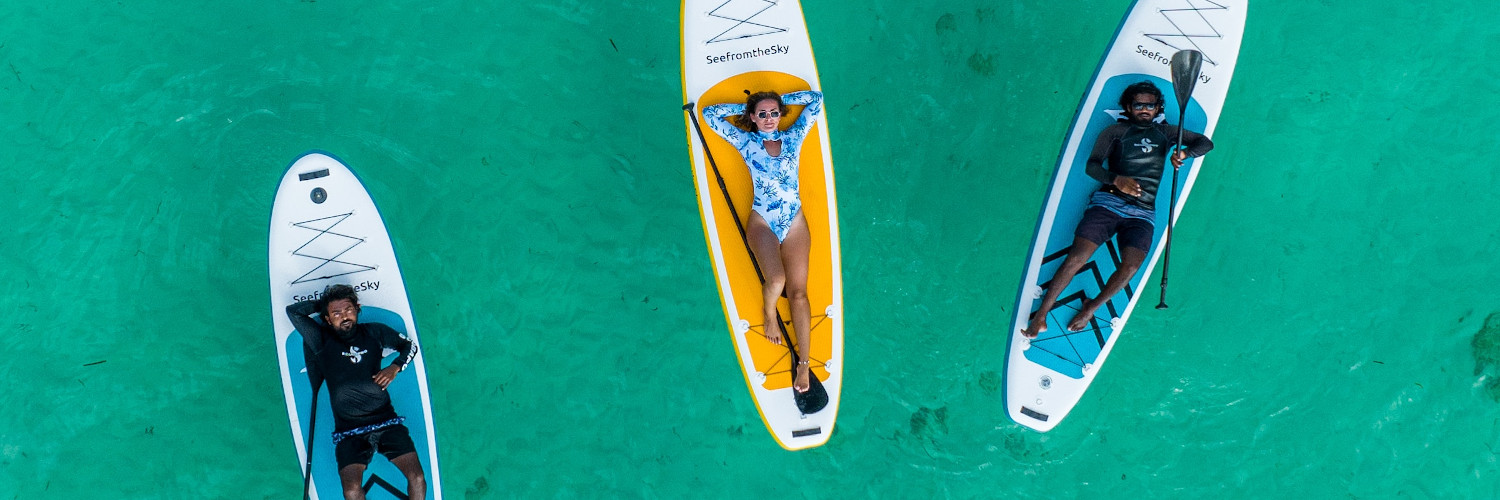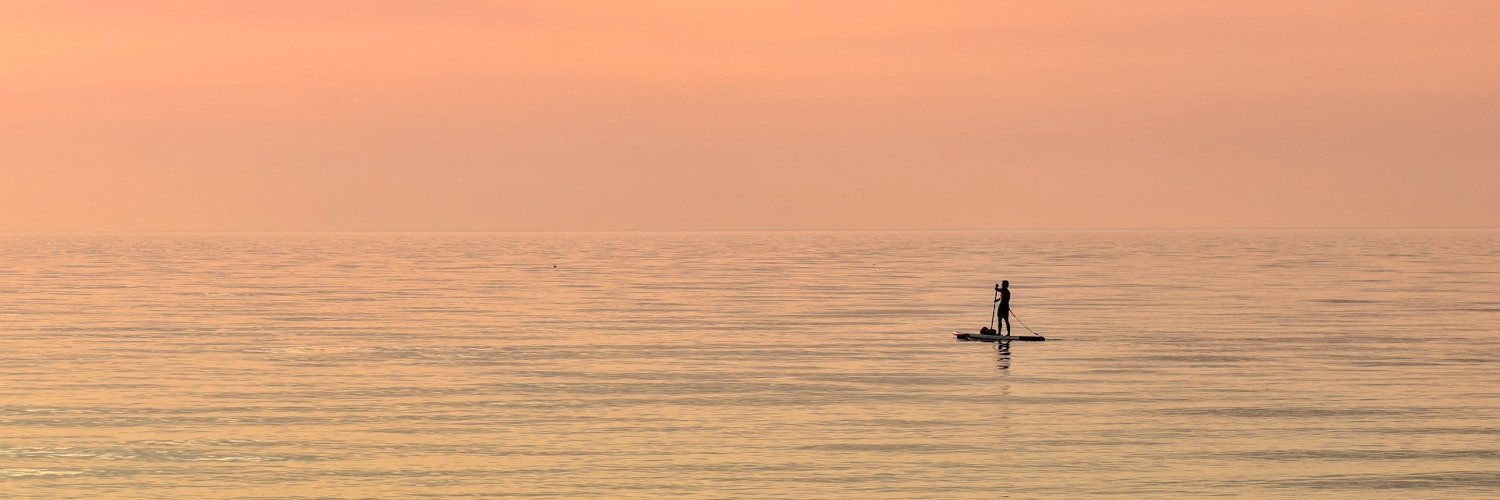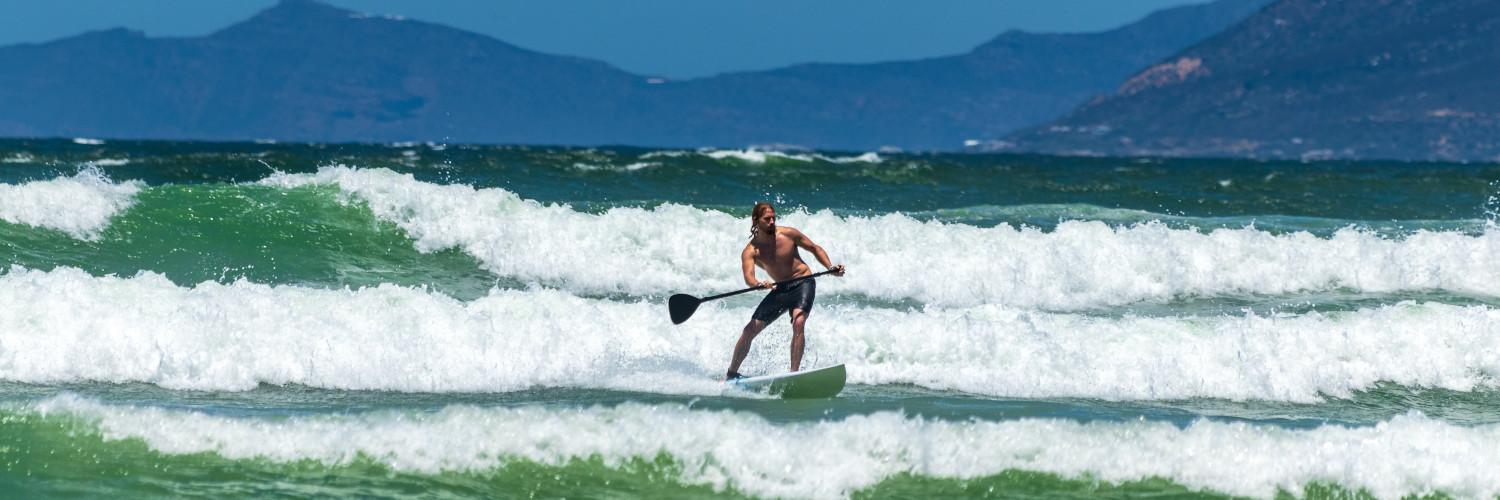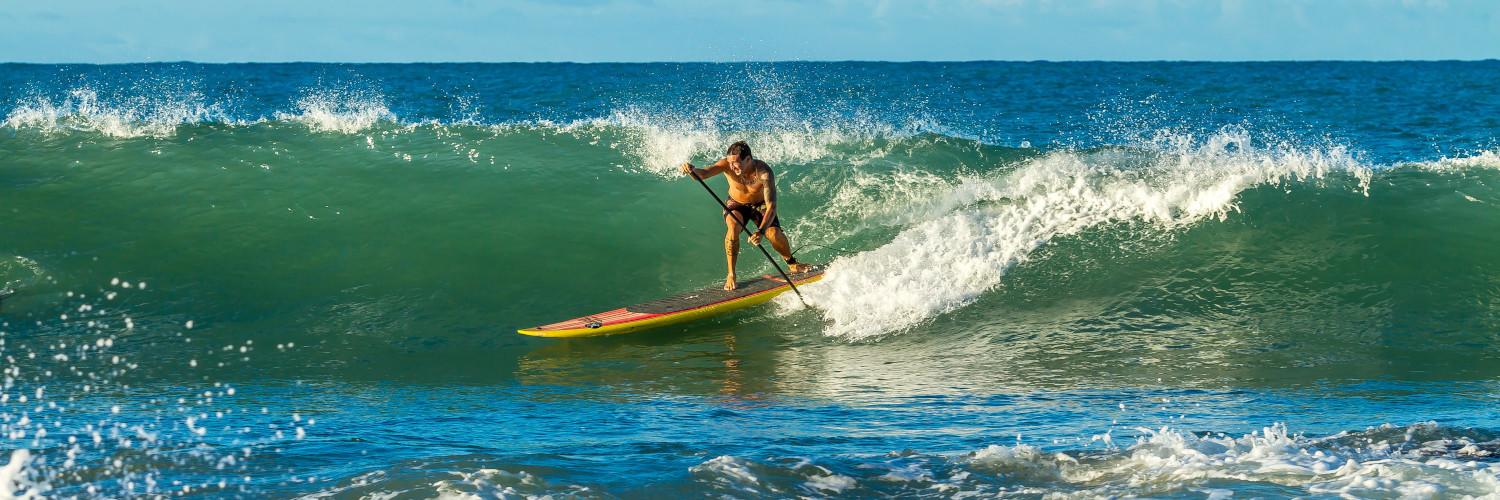SUP Activity: Boosting Health and Adventure with Stand-Up Paddleboarding
Stand up paddle boarding, commonly referred to as SUP, is a versatile water sport that combines elements of surfing and paddling. It involves standing on a wide, stable board and propelling oneself through the water using a long paddle. This activity has surged in popularity due to its accessibility; it offers a fun way to experience the water regardless of skill level. SUP allows practitioners to enjoy a range of environments, from calm lakes and rivers to the expansive ocean, providing a unique perspective above the water that is both exhilarating and serene.
SUP activity is not only enjoyable but also offers a multitude of health benefits. It serves as a full-body workout that improves balance, strengthens muscles, and increases core stability. Moreover, it can be tailored to different fitness levels and goals. For example, SUP yoga challenges individuals to perform yoga poses on the board, enhancing their muscle engagement and mindfulness due to the added stability challenge. For adventure seekers, SUP can also introduce an adrenaline rush when navigating through waves, transforming the calm paddling experience into an exciting surf-like adventure.
The sport’s adaptability extends to its equipment as well. A variety of boards cater to different SUP activities, and while inflatable boards offer convenience and portability, hard boards tend to provide better performance and maneuverability. Selecting the correct board type and paddle can significantly impact one’s experience on the water, making it crucial for individuals to consider the kind of SUP activity they wish to pursue. Whether it is to relax and connect with nature or engage in a dynamic workout, stand up paddle boarding is an activity that can be tailored to suit a diverse range of preferences and objectives.
Essentials of SUP
Stand Up Paddleboarding (SUP) combines balance, strength, and endurance, making it essential for enthusiasts to be well-equipped and knowledgeable about techniques and safety. Success on the water is grounded in quality gear, skillful paddle strokes, and a commitment to safety.
Gear and Equipment
Key gear is crucial for an effective and enjoyable SUP experience. A paddler needs a board suited to their size and the water conditions. Paddleboards come in various lengths, widths, and thicknesses, tailored for different activities, from leisurely lake paddling to surfing ocean waves. A suitable paddle often has an adjustable shaft to match the user’s height and stroke preferences, with a blade size that ensures efficient propulsion through the water.
List of essential gear and equipment:
- Paddle Board: Prioritize a board with the right volume for buoyancy and stability.
- Paddle: Adjustable length to match the paddler’s height and leverage.
- Personal Flotation Device (PFD): A must-have for safety, often required by law.
- Leash: Tethers the user to the board, critical for safety.
- Safety Whistle and Flashlight: For signaling in emergencies.
- Cell Phone Dry Case: To protect personal electronics from water damage.
- Anchor: To stabilize the board during activities like yoga or fishing.
Basic Techniques
Proper technique starts with the paddle stroke, which involves more than arm strength; it’s a full-body movement engaging the core for power. Beginners must learn to use their torso and legs, not just arms, to maximize efficiency and reduce fatigue. The paddler stands centered on the board with feet parallel, slightly apart, and knees slightly bent to maintain balance.
Elements of a paddle stroke:
- Reach forward and immerse the blade fully into the water.
- Pull back using core muscles, keeping the blade parallel to the board.
- Finish the stroke past the hips and lift the paddle out of the water.
- Return to the starting position with a smooth motion.
Safety Measures
Prioritizing safety ensures a worry-free experience. Always wear a personal flotation device and use the board leash; it could save a life. It’s important to check weather conditions and be aware of water currents and tides. Beginners should start in calm water and progress to more challenging conditions as their skills improve. Additionally, carrying a safety whistle and a water-resistant flashlight can assist in signaling for help if necessary.
Safety checklist:
- Wear a PFD: Non-negotiable for all skill levels.
- Secure the Leash: Keeps the board with you if you fall off.
- Monitor Weather and Water Conditions: Avoid unexpected situations.
- Inform Others of Your Plans: Ensure someone knows your location and expected return time.
- Carry a whistle and light: Essential items for alerting others in distress.
SUP Activities and Disciplines
Stand-up paddleboarding (SUP) offers varied activities that cater to a range of interests, from the calm and centering practices of SUP yoga to the adrenaline-fueled excitement of SUP racing. Participants engage in these disciplines for exercise, fun, and to explore watery landscapes.
SUP Yoga and Fitness
SUP yoga combines traditional yoga poses with the challenge of balancing on a paddleboard. This provides an enhanced core workout and adds a layer of difficulty to familiar yoga positions. SUP fitness extends beyond yoga, encompassing a variety of exercises aimed at improving strength, balance, and endurance while floating on water. Engaging in SUP yoga and fitness is both a sporting endeavor and an adventure that harmonizes the body with the rhythm of the waves.
- Yoga & Fitness Benefits:
- Core Stability: Enhanced by the need to balance on the board.
- Strength: Utilizes bodyweight exercises adapted for on-water practice.
- Balance and Coordinity: Naturally developed through maintaining positions on a floating surface.
SUP Fishing and Touring
SUP fishing is a serene and adventurous activity where individuals can cast a line into the water from the stability of a paddleboard, navigating to favored fishing spots or discovering new ones. SUP touring entails longer excursions, often at a leisurely pace, allowing paddlers to explore coastlines, rivers, and lakes. This aspect of SUP is about the journey and the sights one encounters along the way, making it a popular choice for both exercise and exploration.
- Touring Highlights:
- Water Access: SUP boards provide access to various waterways, enhancing the touring experience.
- Exploration: Ideal for sightseeing and visiting remote areas.
- Fishing Essentials:
- Stability: Paddleboards designed for fishing offer enhanced stability.
- Storage: Ample space for gear, tackle, and catches.
SUP Racing and Surfing
SUP racing is a competitive sport that tests speed, skill, and endurance. Races can range from sprints to long-distance marathons across open bodies of water. SUP surfing, on the other hand, is about catching waves and maneuvering the paddleboard with the aid of a paddle. It challenges surfers to maintain balance while riding and performing turns on the waves. Both disciplines push the limits of what can be achieved on a paddleboard, offering a thrilling experience for participants.
- Racing Aspects:
- Speed: Emphasizes quick strokes and rapid maneuvers.
- Endurance: Long-distance events require sustained energy and focus.
- Surfing Techniques:
- Wave Riding: Involves catching and riding waves with control.
- Turns: Use of the paddle to perform sharp turns and navigate surf.
Stand-up paddleboarding presents an array of activities appealing to diverse interests, balancing tranquility and intensity across its many disciplines.
Choosing the Right SUP
Selecting the appropriate stand up paddle board (SUP) is crucial as it affects both enjoyment and safety. The choice depends on the intended use, the paddler’s skill level, and physical attributes.
All-Round Boards
All-round boards are versatile and a good choice for beginners due to their stability. Stability is key for those still developing balance and strength. An all-round board’s typical length ranges from 10 to 12 feet, catering to various activities such as leisure paddling and SUP yoga.
Touring and Racing Boards
Touring and racing boards are designed for speed and efficiency over long distances. They are often longer, narrower, and have a pointed nose to glide through water. The greater length enhances tracking, while the sleek build requires a stronger sense of balance. Individuals seeking to cover distances or engage in racing should consider this type.
Inflatable Boards
Inflatable paddle boards offer convenience and portability without significantly sacrificing performance. They are more durable and can be deflated for easy transport and storage. Strength is not compromised, as these boards when inflated can be very rigid, but they are typically more buoyant and slightly less stable than their solid counterparts. Inflatable boards are particularly suited for those with limited storage space or who wish to travel with their paddle board.
Technique and Improvement
Improving stand-up paddle boarding (SUP) technique hinges on developing advanced skills, honing balance and coordination, and strengthening one’s paddling endurance. Each aspect plays a pivotal role in enhancing a paddler’s performance, whether navigating calm waters or riding waves.
Advanced Paddling Skills
Advanced paddling includes mastering maneuvers and increasing speed. Paddlers should focus on perfecting their forward stroke by placing their hands correctly on the paddle, engaging their core, and using their torso to power the stroke. This results in maximized power and efficiency. Techniques for turning, such as the sweep stroke or the crossbow turn, are essential for maneuvering the SUP, especially when riding waves or during long-distance tours.
Balance and Coordination
Maintaining balance on the SUP requires a proper stance; feet should be parallel, about hip-width apart, and centered between the board’s edges. Practicing yoga or balance-specific exercises can enhance one’s stability on the board, while coordination skills are refined through repeated practice of stroke patterns and foot adjustments, critical for wave riding agility.
Endurance and Strength Training
For SUP enthusiasts looking to tackle long-distance journeys, building endurance is key. Core strength supports efficient paddling technique, while upper body strength ensures sustained power in the paddle stroke over time. Implementing a routine of cardio exercises, mixed with strength training focused on the back, shoulders, and arms, will contribute to a paddler’s ability to maintain speed and resist fatigue.
SUP Adventures and Travel
Stand-up paddleboarding (SUP) combines adventure, travel, and the joy of being on the water. It presents unique opportunities to explore diverse waterways and reconnect with nature, making it a prime choice for enthusiasts seeking low-impact outdoor activities.
SUP Camping and Picnic
SUP camping is an exceptional way for adventurers to immerse themselves in nature. It typically involves paddling to a remote campsite, accessible only via waterways, where minimal impact camping principles apply. Participants enjoy the serenity of lakes or riverside locations, often setting up camp on the shore for the night.
- Essentials for SUP Camping:
- Durable SUP with cargo space
- Waterproof gear bags
- Lightweight camping equipment
- Eco-friendly picnic supplies
A SUP picnic can encompass a leisure day trip, bringing along a cooler or dry bag with food and beverages. Paddleboarders often seek out tranquil spots for breaks, enjoying meals with scenic backdrops.
Destination SUP: Rivers, Lakes, and Oceans
When paddlers venture into rivers, they can expect dynamic conditions and varied landscapes. Rivers like those found in Croatia provide a blend of historical settings and invigorating currents, suitable for both novice and experienced paddlers.
- River SUP Highlights:
- Easier access points and campsites
- Wildlife and natural beauty along riverbanks
- Potential for downriver adventures or serene floats
Lakes offer spacious and peaceful environments for SUP adventures. They cater to all levels of paddleboarders and are ideal for multi-day trips, where one might engage in both SUP and camping activities. The Great Bear Rainforest in Canada is a standout lake destination known for its ethereal beauty and unique wildlife, including the rare spirit bear.
- Lake SUP Highlights:
- Often calm and accessible waters
- Ideal for family outings and group travel
- Opportunities for bird watching and nature photography
Oceans extend an open invitation for long-distance SUP journeys. Coastal paddling presents oceanic challenges such as tides and swell but rewards with expansive horizons and maritime experiences. Adventurers often find themselves entranced by the diverse marine life and vastness of the ocean. SUP tours along coastlines, guided by experienced professionals, can result in an unforgettable journey encompassing the essence of SUP travel.
- Ocean SUP Highlights:
- Vast areas for exploration beyond the shore
- Possibility of encountering marine wildlife
- Varied conditions from calm bays to challenging coastal waves
SUP Lifestyle and Community
Stand Up Paddle Boarding (SUP) is more than just a sport; it’s a way of life that brings families, athletes, and communities together. It encapsulates a range of activities promoting health, mindfulness, and environmental stewardship.
Family and Kids
SUP offers a unique opportunity for family bonding as it is an activity accessible to all ages. Families can enjoy calm waters, where the risk is minimal, ensuring a safe environment for kids. It serves as a full-body workout that is also a form of cross-training, beneficial for developing coordination and balance in young paddlers. Introducing mindfulness and meditative practices on a paddle board can be a tranquil experience, fostering a connection with nature.
SUP Events and Competitions
The community aspect of SUP is magnified through various events and competitions. They cater to different skill levels, from amateur to professional athletes, providing opportunities for paddlers to test their skills and endurance. These events often emphasize inclusivity, bringing together participants from diverse backgrounds to share in the camaraderie and the competitive spirit of the sport.
Eco-Friendly SUPping
SUP enthusiasts often advocate for protection of the waterways, emphasizing eco-friendly practices. Paddlers are encouraged to engage in environmental awareness while on the water, often collecting floating debris and promoting the health benefits of clean waterways. The sport inherently inspires participants to value and work towards the conservation of aquatic ecosystems.





